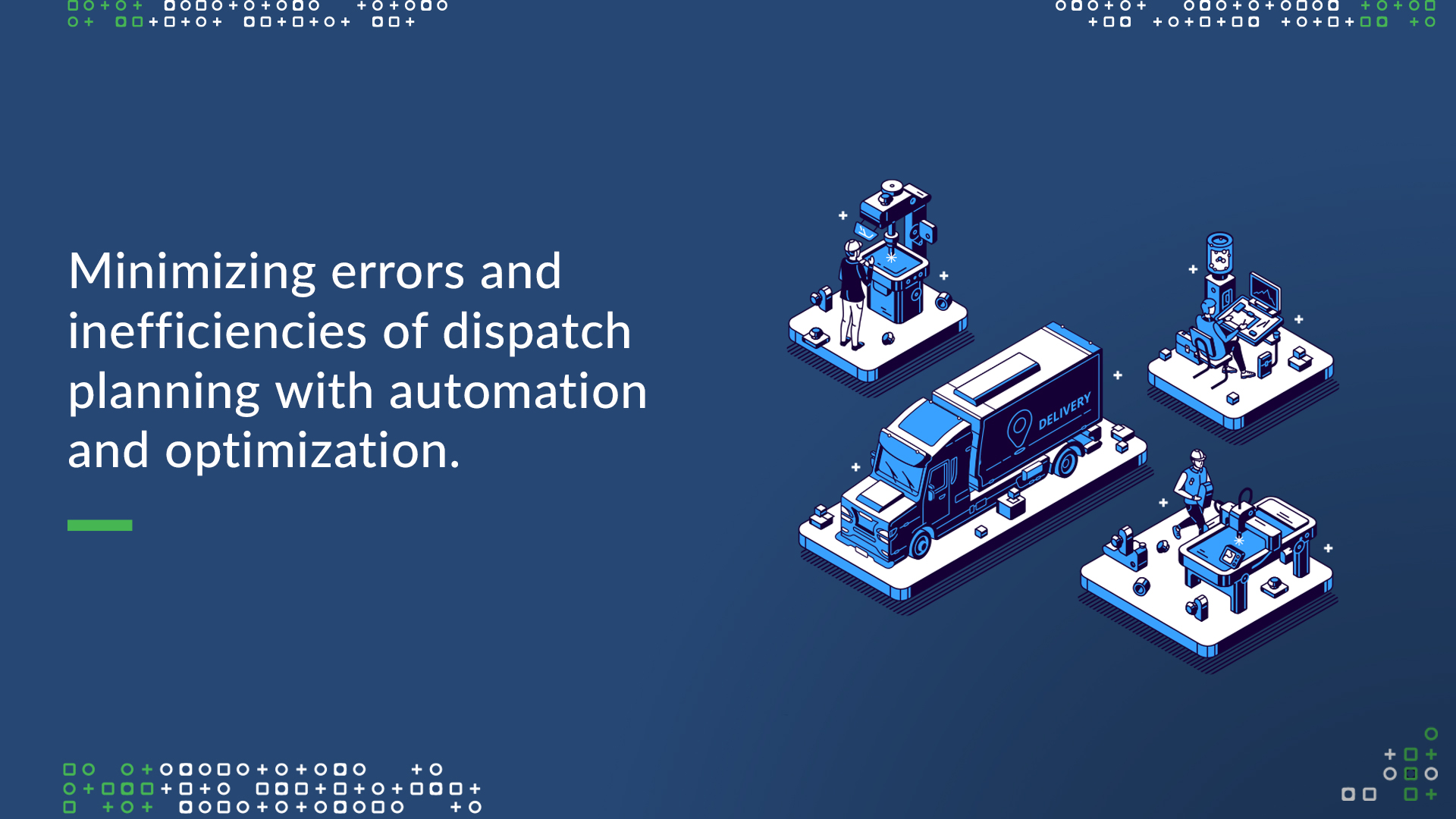Efficiency is the foundation stone of a successful business. The upstream and downstream effects of errors and inefficiencies propagate through the supply chain in increasingly uncertain and equivocal ways that create weak links throughout the chain. Every day, immense human effort and initiatives are directed towards managing the entropy of the supply chain lest errors go unaddressed. Planning, which is a centre point of supply chain management and is at the forefront of supply chain activities, requires consistent improvement and adherence to efficiency and accuracy standards. One such planning dimension is that of dispatch.
It is essential to accurately plan how the stock of finished products is allocated to buyers, distributors, or dealers. Planning errors, including suboptimal stock allocation, do not allow the full potential of the available inventory to be utilized. These not only compromise with revenue and profit margins but are also damaging to the customer experience. Yet, errors continue to prevail in the planning process despite the most meticulous effort of planners.
The Why and the What of Planning Errors & Inefficiencies
In today’s business world, supply chain planning is still largely driven by human planning and decisioning and supported by elementary software, such as excel sheets. While such methods had sufficed in the past for small businesses with little complexity and plurality of variables, the modern supply chain has metamorphosed into a giant machine of a multitude of moving parts Hence, require massive depth in the data planning
Contextual Example
To elucidate the nature of planning for a modern supply chain, consider the case of a major automotive manufacturer who struggles to streamline their dispatch planning process. With a product portfolio of close to 30 different models with several sub-variants, the manufacturer needs to service an extensive dealer base from their production units and warehouses that are spread across the country. The consideration of distances between the plants and the dealers besides the loading capacity and constraints of carriers is also vital to planning as order fulfilment needs to be done cost-efficiently. Errors and inefficiencies are observed due to the enormous entropy of the system created by the multitude of variables – the number of SKUs, the number of dealers, order mixes requested, dealer locations, geographies, etc.
Such complexity of data is difficult to manage for the human planner. Further, the collection and validation of data are of crucial importance but also difficult considering the scope of the problem. Consequently, dispatch planning becomes laden with inadvertent errors.
A. Human Errors
Human errors are perhaps the most common cause of management inefficiencies. Especially, planning that is undertaken with excel with manual entry of values is more susceptible to errors. As per a UK-based research study, participated by nearly 1200 senior managers and C-suite executives; poor decisions based on spreadsheet data was reported by 33% of major businesses, while 1 in 5 businesses reported major financial losses due to faulty spreadsheets.
Some instances of dispatch planning errors are-
- Wrong stock allocation. It is not uncommon for orders to be fulfilled with the wrong product or order mix. Especially for bulk orders, part of the order may be unfulfiled or a different mix dispatched altogether. This either leads to returns or cancellations or new dispatches, creating additional cost burdens for the business. Further, for production driven by JIT (just-in-time) management practices, such errors can lead to large backorders.
- Wrong destination. The destination address for orders may be wrongly recorded leading to wrong dispatches. This implies cancellations and re-dispatches and greater logistics spending and inventory costs.
- Constraint violation. There are unique constraints and loading criteria for each carrier. For instance, dispatch would need to adhere to the specific loading criteria for the specific dimension and weight of the product. When businesses rely on a fleet mix of several different carriers, many different constraints impose restrictions on dispatch. Consequently, inadvertent errors of constraint violation may creep in.
B. Inefficiency of Stock Allocation
Certain inefficiencies of dispatch planning are beyond the purview of manual entry errors and largely an attribute of the nature of the planning exercise.
- Suboptimality of Stock Allocation. As mentioned earlier, stock allocation is complicated considering the multiplicity of variables and complexity of the ecosystem. The essence of effective stock allocation lies in the efficiency of the process, implying stock allocation should be affected such that all incoming orders are fulfilled in a cost-efficient way. Through static planning using spreadsheets, the human planner is unable to make judicious decisions of effective stock allocation and plan smart cost trade-offs as it is impossible to parallelly compute all possible planning outcomes for optimization. The result is the inefficiency of cost and order fulfilment.
- Insufficient Stock. Besides the limitations in human planning, the on-ground reality of manufacturing poses an immediate barrier to stock allocation. Manufacturing companies face the possibility of insufficient stock due to uncertain demand. Unless production capacities are increased harmoniously, it is difficult for dispatch to ensure a hundred per cent sales order fulfilment. This leads to ’missed opportunities’ whereby the available inventory cannot be utilized for the actualization of the complete revenue potential. Commonly, such scenarios lead to poor order fulfilment, backorders, and order delays, leaving customers largely dissatisfied with their purchasing experience.
The Solution
Considering that human errors, human planning and decisioning, and utilization of legacy software are at the crux of dispatch planning inefficiencies, the solution to greater planning competence lies in planning automation and optimization. The planning paradigm in the age of Industry 4.0 is one that is automated and backed with machine learning (ML) and artificial intelligence (AI).
A. Automation
In automated planning, data capturing and validation is driven by IoT technology and complementary solutions and the data is integrated with a technology platform. The master and operational data are fed into the system or updated in real-time, and planning outcomes are derived on-demand or updated consistently with every change in the inputs. Manual touchpoints are reduced, therefore, ensuring minimization of human errors. Ecosystem rules and constraints are adhered consistently thus contributing to the reliability of the system.
Further, with an integrated technology platform, accurate and complete visibility of the inventory, existing at different warehouses and plants is available for scenario-driven planning and exception handling. Such automation also allows planners to direct their time and skill towards high-level and value-driven business strategy.
B. Optimization
Optimization solutions are directed at capitalizing the full revenue or order fulfilment potential of the environment. This is especially useful when the constraints and uncertainties of the environment restrict the realization of the objectives of planning. For instance, the Verdis Dispatch Allocation and Planning (DAP) algorithm spans the complete solution space of dispatch composed of 75 million data points to derive the solution with the highest optimization in terms of costs and order fulfilment.
When production is not harmoniously aligned with the demand, an optimization solution can utilize a rule-based system of stock allocation based on order value, priority customers, destinations, distance, or a complex hybrid of many variables. Such software logic ensures a high level of customer service and a greater actualization of revenue than is otherwise possible through human planning. In the case of Verdis DAP, higher-order processes such as club loading and stock transfer are implemented whereby the stock from multiple plants are combined for greater order fulfilment.
To sum up
Errors and inefficiencies of planning are expensive propositions for an organization; big or small. The expense is not just in terms of costs but also customer trust and brand value. Although errors are natural and impossible to eliminate owing to the innate entropy of the modern supply chain. There is an immense potential of course correction and higher realization of operational objectives through planning automation and optimization. With automation and optimization, planning does not need to be confined within the limitations of legacy software nor does the skill and effort of the planner consigned to repetitive and menial tasks. It is time that supply chain planning ceases to be a relic of the past and becomes an efficient driver of competitiveness for the modern supply chain.









